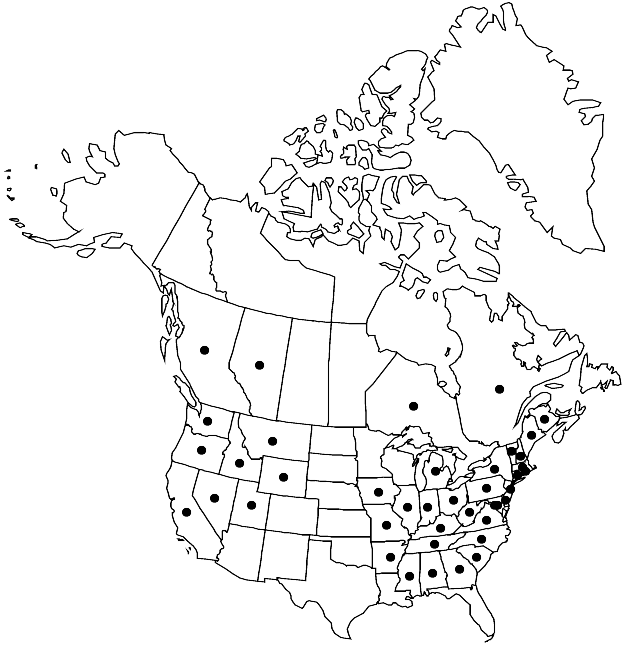Draba verna
Sp. Pl. 2: 642. 1753.
Annuals; scapose. Stems (few-to-many from base), unbranched, (0.2–) 0.5–2 (–3) dm, pubescent proximally, glabrous distally, trichomes simple and 2 (–4) -rayed, 0.1–0.4 mm. Basal leaves rosulate; petiolate; blade obovate, spatulate, oblanceolate, lanceolate, oblong, or, rarely, linear, 0.2–1.8 (–3) cm × (0.5–) 1–5 (–10) mm, margins entire or 1–5-toothed on each side, surfaces pubescent with simple or stalked, 2–4-rayed trichomes, 0.1–0.5 mm. Cauline leaves 0. Racemes 4–20 (–30) -flowered, ebracteate, usually considerably elongated in fruit; rachis usually flexuous, glabrous. Fruiting pedicels divaricate to ascending, straight or slightly curved upward, (2–) 5–20 (–35) mm, glabrous. Flowers: sepals (green or purplish), oblong, 1–2.5 mm, glabrescent or pubescent, (trichomes simple or 2-rayed); petals white, deeply 2-fid, (1.5–) 2–4.5 (–6) × 1–2 mm; anthers ovate, 0.2–0.4 mm. Fruits obovate, oblanceolate, lanceolate, elliptic, oblong, or linear, plane, flattened, (2.5–) 4–9 (–12) × 1.5–2.5 (–3.5) mm; valves glabrous; ovules (20–) 32–70 (–84) per ovary; style 0.02–0.2 mm. Seeds ovoid (slightly flattened), 0.3–0.6 (–0.8) × 0.2–0.4 mm. 2n = 14, 16, 20, 24, 28, 30, 32, 34, 36, 38, 40, 52, 54, 58, 60, 64.
Phenology: Flowering Feb–May.
Habitat: Cedar glades, lawns, fields, pastures, waste places, grassy hillsides, disturbed sites, roadsides
Elevation: 0-2500 m
Distribution

Introduced; Alta., B.C., N.B., Ont., Que., Ala., Ark., Calif., Conn., Del., D.C., Ga., Idaho, Ill., Ind., Iowa, Ky., Maine, Md., Mass., Mich., Miss., Mo., Mont., Nev., N.H., N.J., N.Y., N.C., Ohio, Oreg., Pa., R.I., S.C., Tenn., Utah, Vt., Va., Wash., W.Va., Wyo., Europe, Asia, nw Africa, also in Central America, South America, Australia
Discussion
Draba verna represents a highly variable and taxonomically difficult complex within which species, subspecies, varieties, and forms have been named (O. E. Schulz 1927); only those synonyms pertaining to North America are listed above. Most of the taxonomic difficulties are the results of disploidy, autogamy, and hybridization. The morphological extremes are connected by intermediate forms in every conceivable character. Furthermore, there appears to be no correlation between morphology, cytology, geography, and ecology to support the division of this complex into meaningful taxa. A complex cytological picture was presented by Ø. Winge (1940), including the highest count of 2n = 94, which has not been confirmed by subsequent botanists.
Erophila vulgaris de Candolle is an illegitimate name for Draba verna.
Selected References
None.
Lower Taxa
"elongated" is not a number."thick" is not a number."dm" is not declared as a valid unit of measurement for this property."dm" is not declared as a valid unit of measurement for this property.